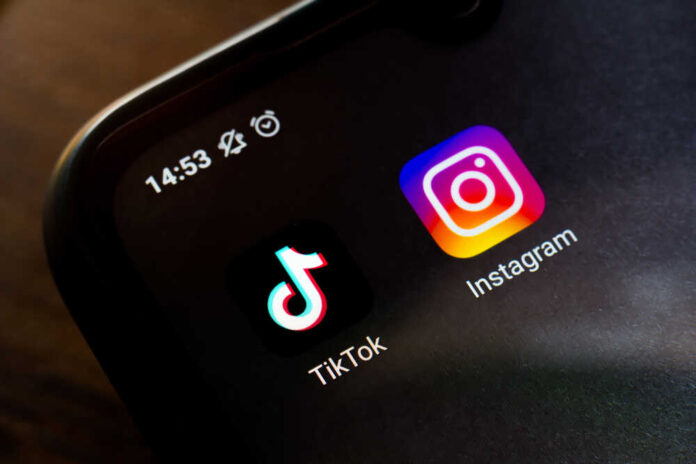A new study suggests that the risk of vaping, smoking, or both is doubled among youths and young adults who use social media for seven hours or more every day.
The research discovered a strong correlation between the amount of time individuals spend on social media sites like TikTok and Instagram and their likelihood of smoking or vaping.
Nearly 11,000 young Britons, ranging in age from 10 to 25, were surveyed and followed from 2015 to 2021 for the purpose of the research.
8.5% claimed they were current smokers, and 2.5% stated they were vapers– about 1% of people reported doing both.
Cigarette smoking was reported by 17% of those who spent seven hours or more per day on social media, compared to 2% of those who claimed no social media usage.
Similarly, although 2.5% of those who used social media seven or more hours a day vaped, fewer than 1% of people who avoided it did the same.
Smoking and vaping were seven times more common among those who spent seven hours or more each day engrossed in social media as compared to those who did not.
By contrast, 9.2% of daily social media users acknowledged smoking cigarettes, whereas 2% of non-users admitted to smoking cigarettes in the last 30 days.
This increased to 12.2% among smokers whose daily social media use was between four and six hours and 15.7% among those whose usage was seven hours or more during the workweek.
Compelling evidence that vape businesses are using social media to sell their goods,’ the researchers said, citing sources such as Imperial College London’s School of Public Health.
A combination of sponsored influencers and direct, targeted advertising from the tobacco industry may be using social media to increase cigarette and e-cigarette usage, they said.
According to the study’s authors, social media platform owners have “substantial power” to alter users’ exposure to tobacco product advertising.
The 2024 survey found that 7.6% of 2,587 adolescents (11–17 years old) were vaping, which is consistent with the previous year but increased from 2.8% in 2017 to 0.8% in 2013.














